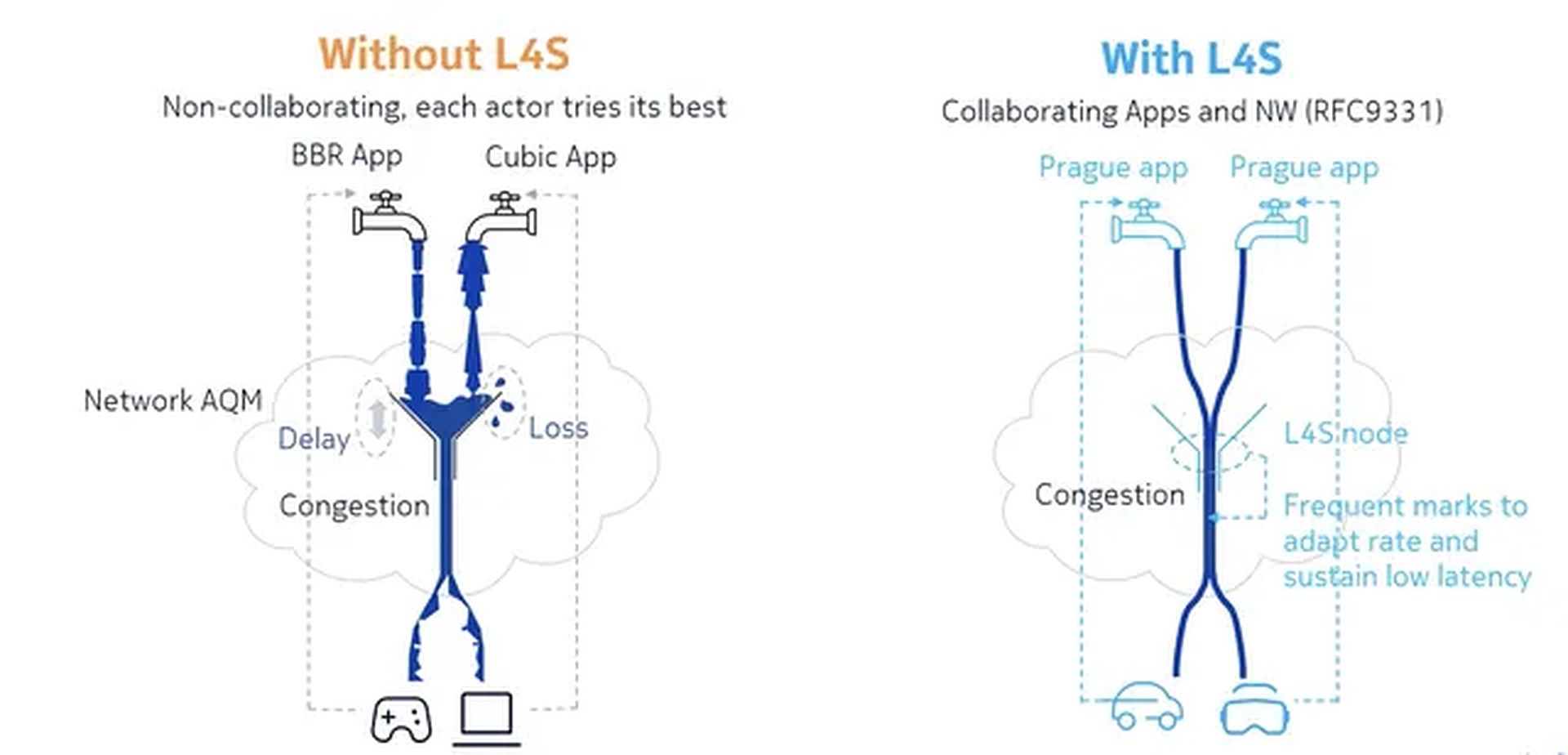Remember this term: L4S. It is the new obsession of major industry players like Apple, Google, and Comcast. What sets L4S apart is its ability to optimize data throughput without compromising on latency.
Latency, the nemesis of a seamless online experience, often plagues internet users despite high-speed connections. L4S tackles this issue by significantly minimizing delays in data transfer. Swiftly identifying and responding to congestion ensures data packets move through the network with minimal hindrance, resulting in a faster and more responsive internet. Sounds good, right? Let’s dig deeper and find out the details.

What is L4S?
L4S operates as a congestion-control mechanism, enhancing the way data packets traverse the internet. It introduces markers within these packets to detect and respond to congestion promptly. This feedback loop enables devices to adjust data flow in real time, preventing bottlenecks and ensuring smoother transmission. Here is why it is important:
- Latency reduction: L4S tackles the latency issue head-on. By minimizing delays in data transfer, it enhances the speed and responsiveness of online activities, such as video calls, streaming, and web browsing.
- Optimized throughput: It optimizes data throughput without compromising on latency. This means faster data transfer rates while maintaining a low delay, providing a seamless user experience.
- Future applications: L4S unlocks possibilities for applications and services that demand ultra-low latency. From cloud gaming to VR/AR experiences and high-quality video conferencing, its impact extends to various latency-sensitive domains.
- Improved user experience: The integration of L4S promises smoother, interruption-free internet experiences. It aims to eradicate common frustrations like buffering, slow-loading web pages, and choppy video calls.
At its core, L4S introduces specialized markers within data packets that detect and respond to congestion within the network. These markers enable devices and network components to promptly identify areas of congestion and adjust data flow in real-time. This adjustment prevents bottlenecks, ensuring smoother and more efficient data transmission.

L4S operates by incorporating feedback mechanisms within the packets themselves. When congestion occurs, these markers provide immediate feedback to the sending devices, allowing them to regulate data flow before congestion worsens. This proactive approach minimizes delays caused by congestion, resulting in faster and more reliable data transfer.
Unlocking potential: Applications and services
The implications of L4S extend far beyond everyday web browsing. This groundbreaking technology unlocks the potential for applications and services that demand ultra-low latency. From immersive cloud gaming experiences to seamless VR/AR interactions and high-definition video conferencing, L4S opens doors to a new realm of possibilities in various latency-sensitive domains.
The importance of L4S lies not only in its immediate impact but also in its future trajectory.
- Industry integration: Major industry players like Apple, Google, Comcast, and others are actively exploring and integrating L4S into their networks and devices. Trials, beta support, and collaborative initiatives underscore the commitment to harnessing the potential of this technology.
- Standardization and adaptability: L4S adheres to standards defined by the Internet Engineering Task Force (IETF), ensuring compatibility and seamless integration across diverse network infrastructures. Its adaptability and ability to coexist with existing protocols make it a highly promising addition to Internet technology.
- Evolution of networks: As L4S gains traction, networks are evolving to support its implementation. Cable broadband networks have already embraced it, while efforts are underway to incorporate it into 5G and Wi-Fi networks. This evolution signals a transformative shift toward a faster, more efficient internet landscape.
The anticipated impact on user experience
As L4S becomes a fundamental component of mainstream networks, users can expect a revolutionary improvement in their internet experiences. Reduced latency and smoother data transmission could become the new standard, transforming online interactions into seamless, instantaneous experiences.
In essence, L4S represents a watershed moment in the evolution of internet technology. Its integration heralds a future where latency no longer hampers our digital interactions, paving the way for a more connected, efficient, and exhilarating online world.
Featured image credit: Umberto/Unsplash





